VCB – FACTS YOU MUST KNOW
VCB is a type of switchgear used to switch ON and OFF electrical power distribution systems. This type of breaker is used in the High Voltage system. Vacuum offers the highest insulating strength. So it has far superior arc quenching properties than any other medium. Arc Quenching takes place in a vacuum medium.
The operation of switching on and closing of the current-carrying contacts and interrelated arc interruption takes place in a vacuum chamber in the breaker which is called vacuum interrupter. The Vacuum interrupter was introduced in the year of 1960 But still, it is a developing technology.
It is used for voltage range between 1KV to 33KV. It is used in a High Voltage ship where operation voltage is above 1KV.
CONSTRUCTION & WORKING
When the breaker operates, the moving contact separates from the fixed contact, and an arc is struck between the contacts. The production of an arc is due to the ionization of metal ions and depends very much upon the material of the contact.
The arc is quickly extinguished because the metallic vapors, electrons, and ions produced during arc are diffused in a short time and seized by the surfaces of moving and fixed members and shields.
A Vacuum circuit breaker is a circuit breaker in which a vacuum is used to extinct the arc. VCB has excellent interruption and dielectric recovery characteristics and can interrupt the high-frequency currents which result from arc instability, superimposed on the line frequency current. The main parts of a typical VCB are-
- Fixed contact
- Moving contact
- Arc shield
The fixed contact is a permanent contact provided in the VCB between the insulator support and the pole terminal.
The moving contacts of the circuit breaker move through a distance of 5 to 10 mm depending upon the operating voltage.
The moving support is provided between the insulator and metallic bellow.
The movable member is connected to the control mechanism by stainless steel bellows. This enables the permanent sealing of the vacuum chamber so as to eliminate the possibility of a leak.
The arc shields are supported o the insulating housing such that they cover on these shields and is prevented from condensing on the insulating enclosure. The possibility of a leak is eliminated due to permanent sealing of the vacuum chamber for that a glass vessel or ceramic vessel is used as the outer insulating body.
The operation of opening and closing of contacts occurs in a vacuum chamber in the breaker which is called vacuum interrupter. The moving contact, fixed contact, and arc shield are components of the vacuum interrupter. Sometimes vacuum interrupter also known as cartridge because it comes in the form of a cartridge. For each phase, there is one cartridge similarly for 3 phases there will be 3 cartridges. The pressure inside the vacuum interrupter is maintained below 10-4 torr (Depending upon size say 10-5 to 10-12 torr).
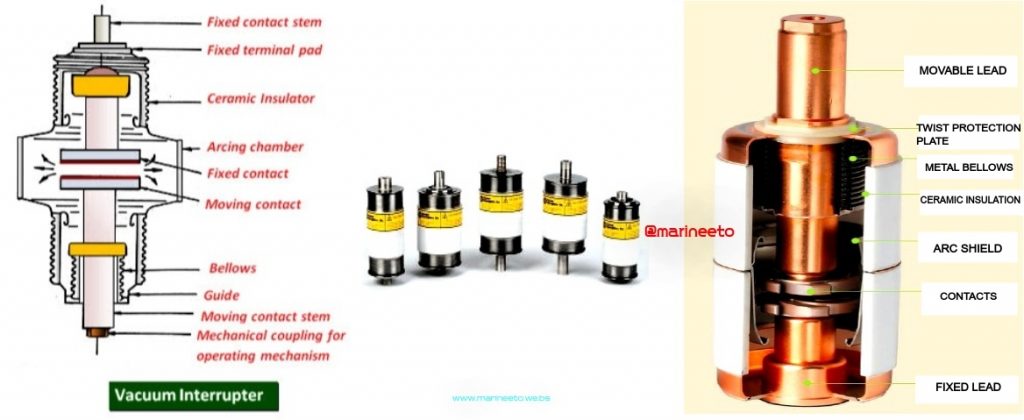
Arc extinction is the main process of a circuit breaker. We know that circuit
breakers work under the instructions from the relay. When the trip coils from relay energize, circuit breaker identifies fault occurred and hence the contacts are pulled apart. A high-intensity current flows through the contacts of the circuit breaker before they are opened by the system.
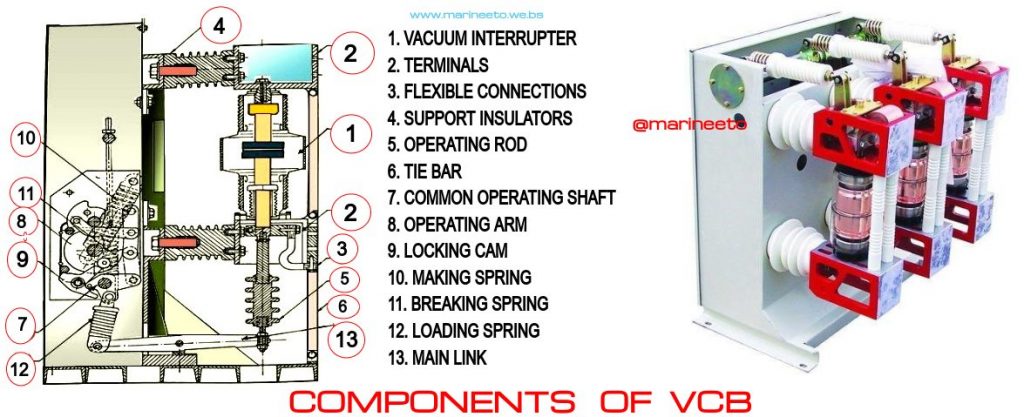
MAINTENANCE IN VCB
VCB is maintenance-free. Most of the maintenance is carried out in dry-dock or in survey. But still, there are risks of losing a vacuum more unlikely to happen. Two important tests are carried out in VCB in the survey are-
- Vacuum Test
- Gap Gauging
VACUUM TEST: It is difficult to measure vacuum inside vacuum interrupter. To check whether the vacuum is within range an HV is applied across moving and fixed contact in an open condition using HIPOT equipment and leakage current is monitored. If the leakage current is within an acceptable range that means vacuum interrupter is in good condition else it has to be replaced with a new one.
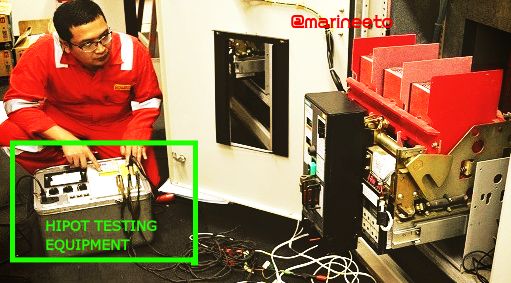
GAP GAUGING: In this test, the movement of moving contact is measured. Normally it is done in the switchboard survey. With the help of gauge, the measurement of moving contact is taken to ensure that the minimum gap, the distance between moving and fixed contact is between desired value. If contact surface melted or deteriorated distance may change.
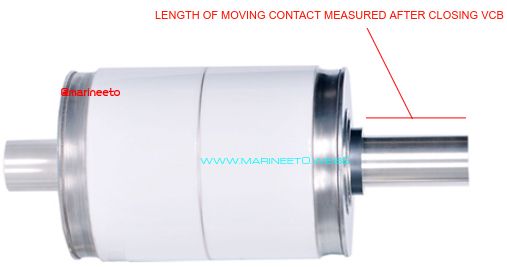
In this test, VCB is drawn out, the control voltage is given for operation, and measurement of moving contact before closing and after closing breaker is recorded.
ADVANTAGES OF VCB
- They are compact, reliable, and have a longer life.
- There are no fire hazards.
- They can interrupt any fault current.
- The outstanding feature of a VCB is that it can break any heavy current
- The low inertia and hence require smaller power for control operation.
- No noise is produced while operating.
- Require less power for control operation.
- Unlike Oil Circuit Breaker (OCB) or air blast Circuit Breaker (ABCB), the explosion is avoided. This enhances the safety of the operating personnel.
- It has a higher dielectric strength.
DISADVANTAGES OF VCB
- Not suitable for a voltage exceeding 33KV.
- Loss of vacuum cannot be repaired has to be replaced with a new cartridge
CONCLUSION
We can say that the Vacuum circuit breaker is really the most reliable one with low cost, no fire hazards, no gas generation, low arc energy, minimal maintenance, and low inertia. So this is the most widely used circuit breaker used for high voltage transmission.
Anything leftout please mail us.
REFERENCES
- buyKorea https://www.buykorea.org/
- elprocus https://www.elprocus.com/
LIKE POST? PLEASE SHARE

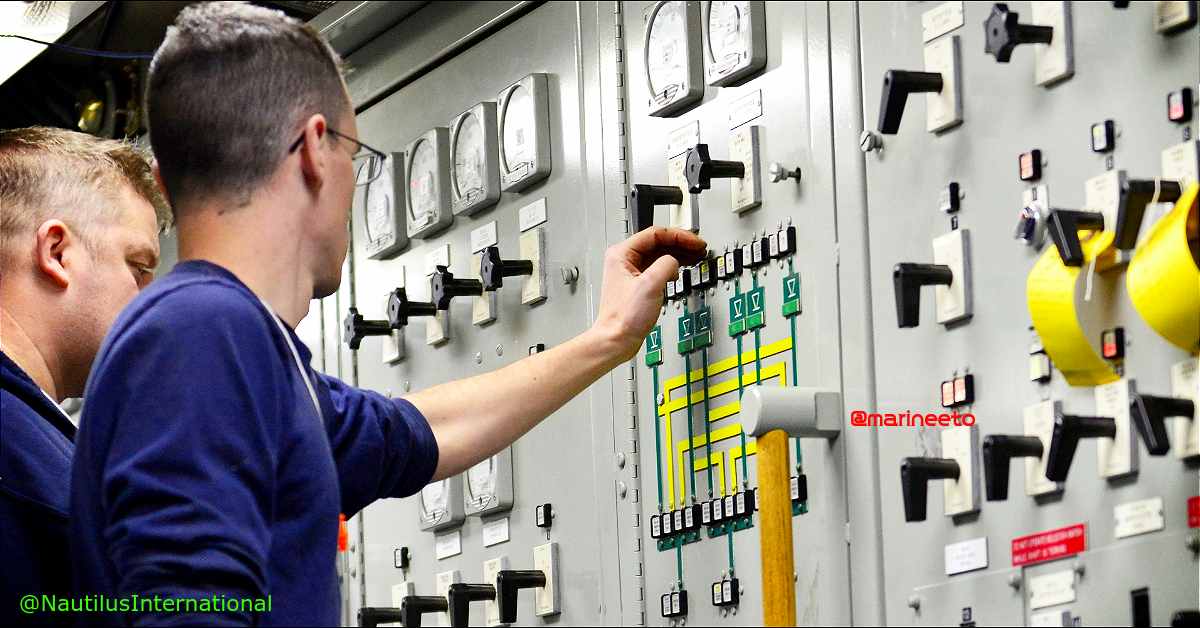
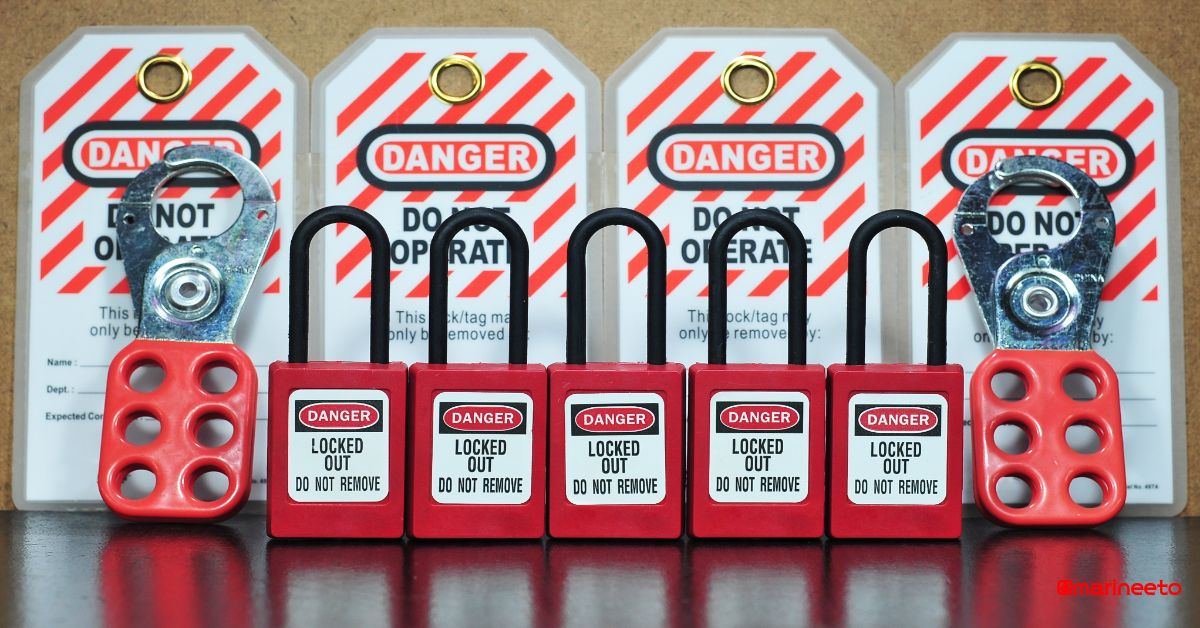


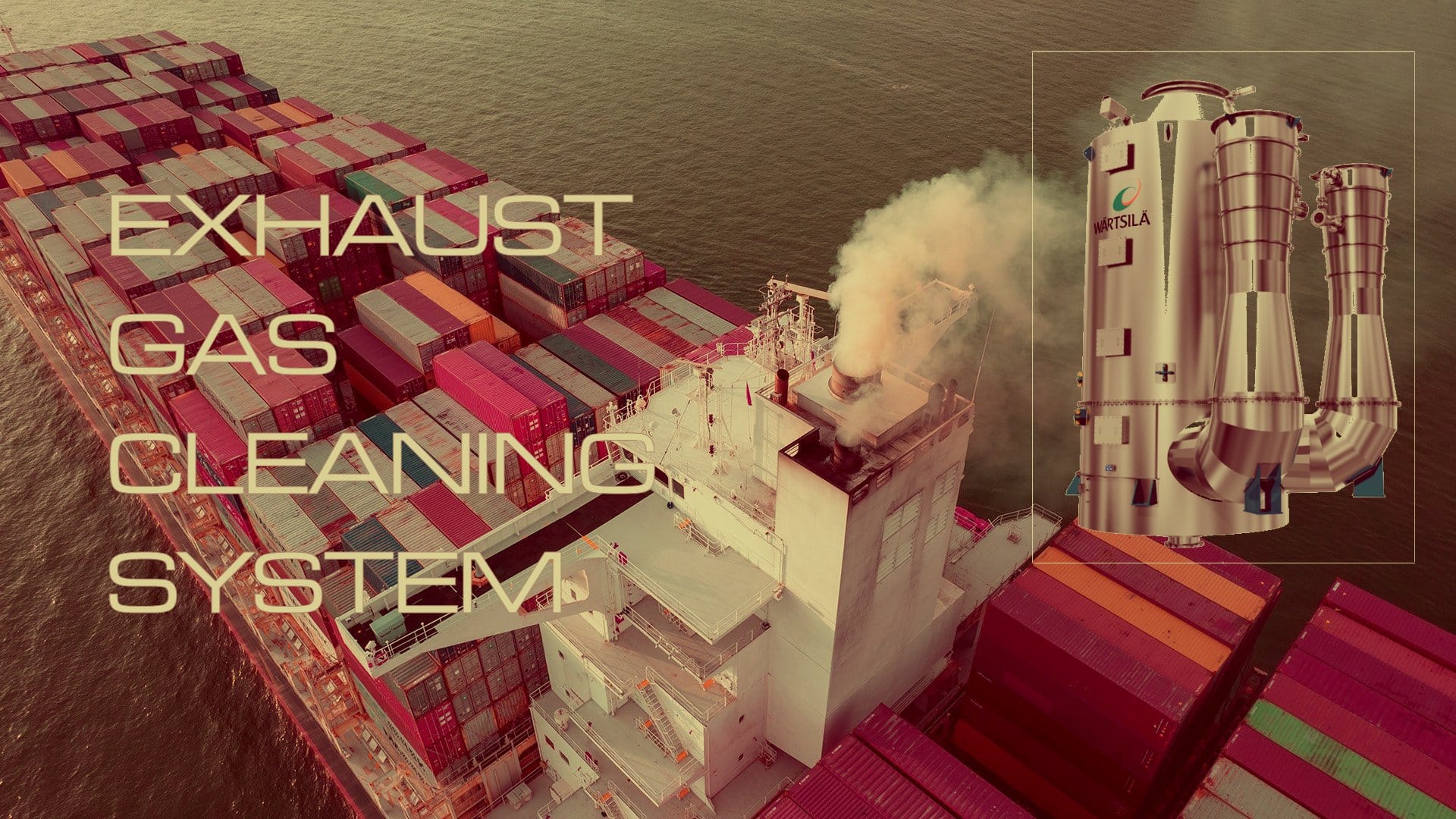
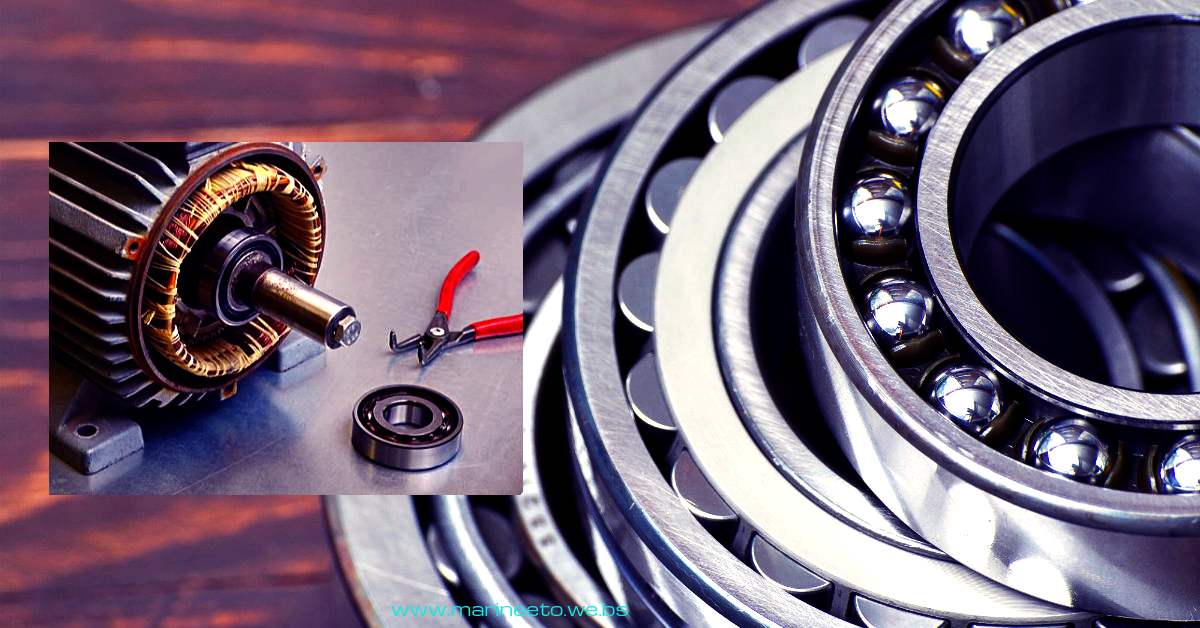

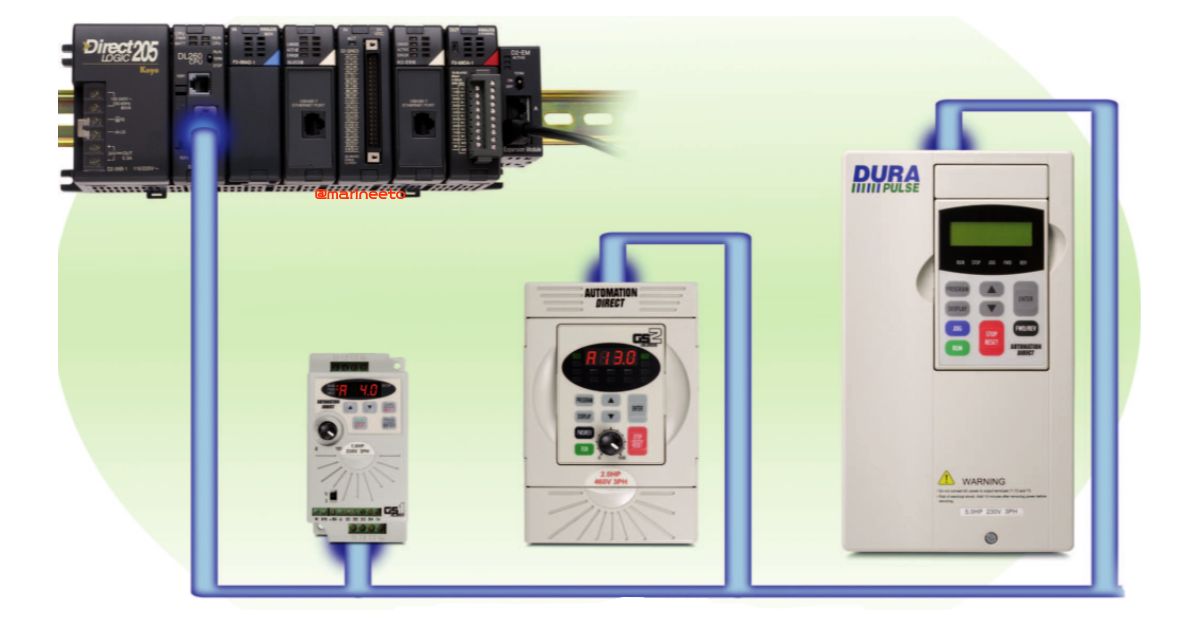
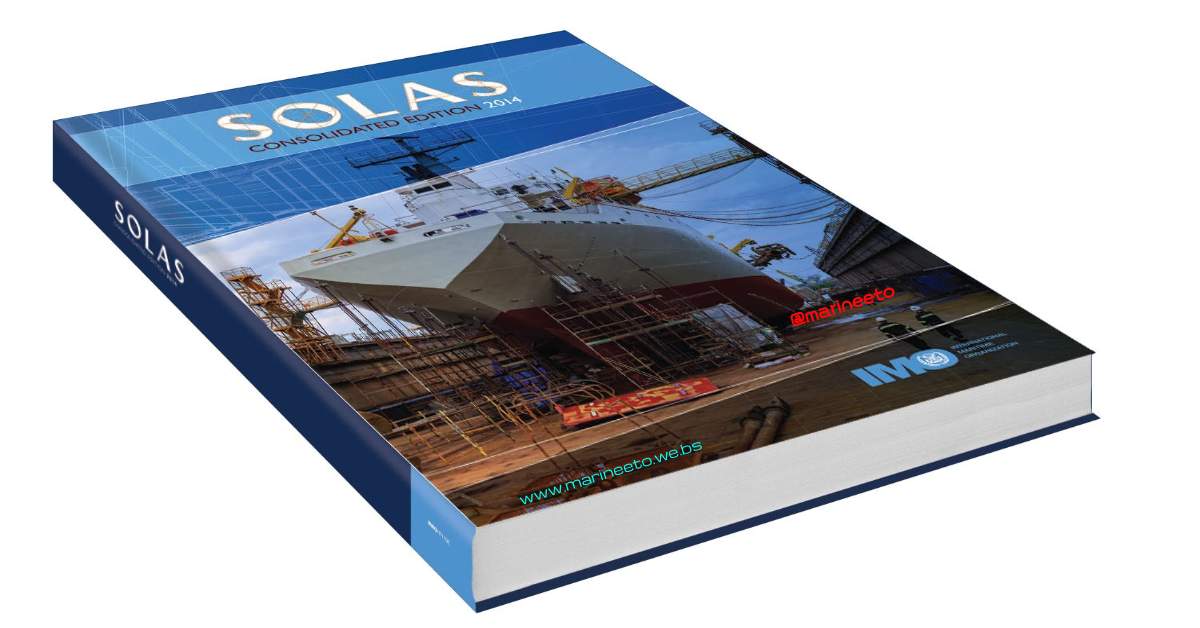
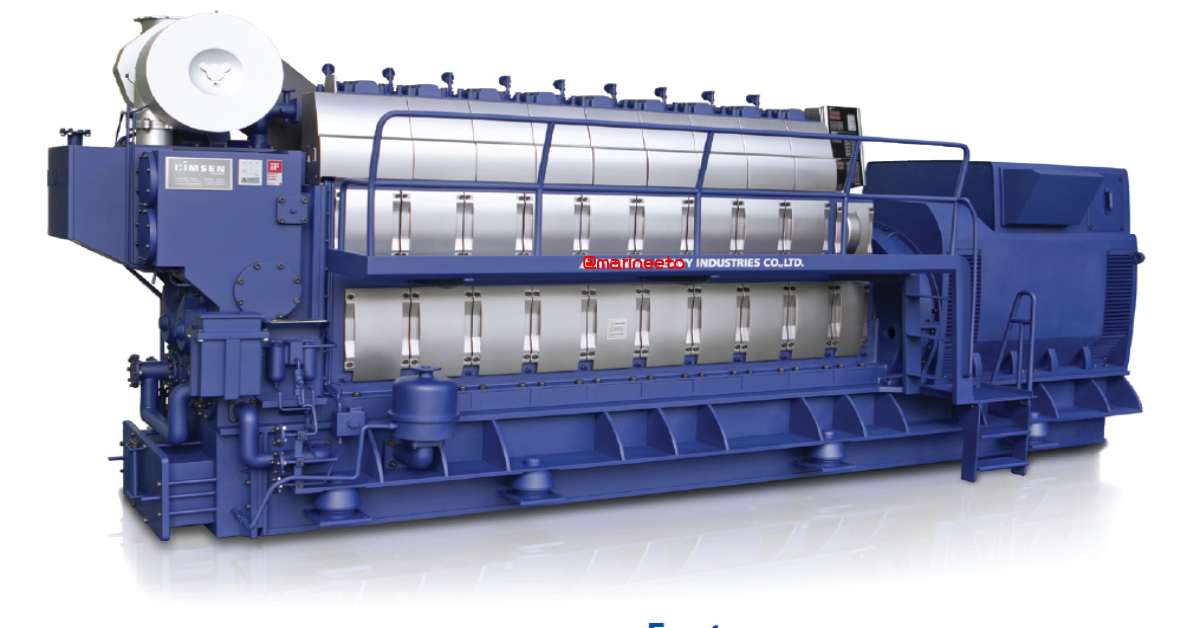
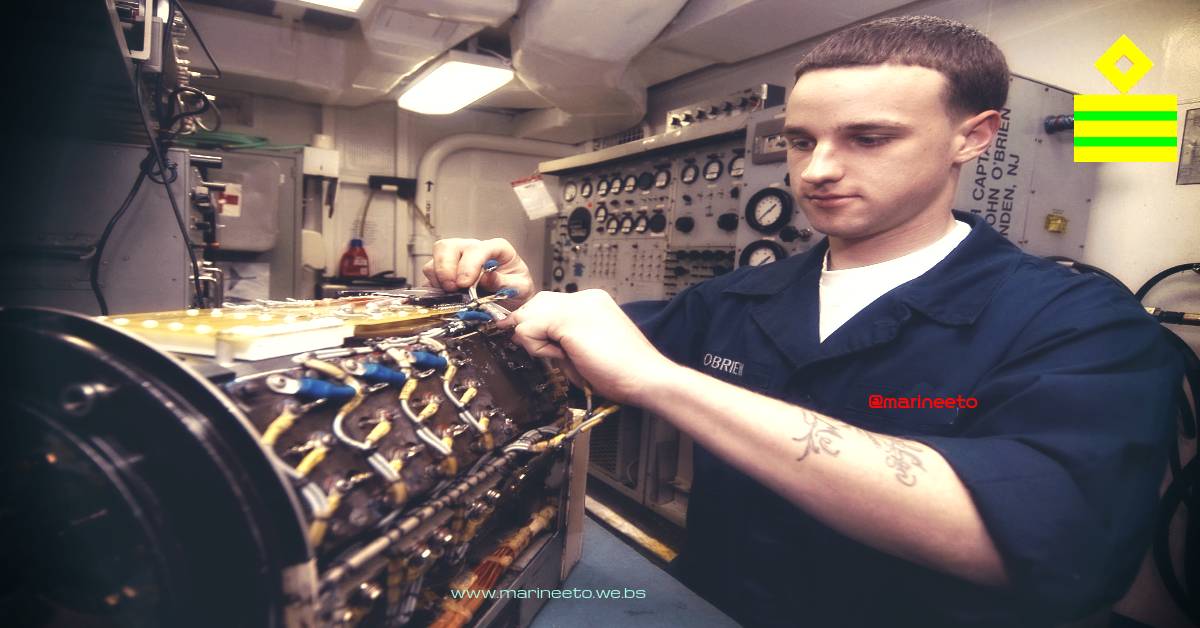
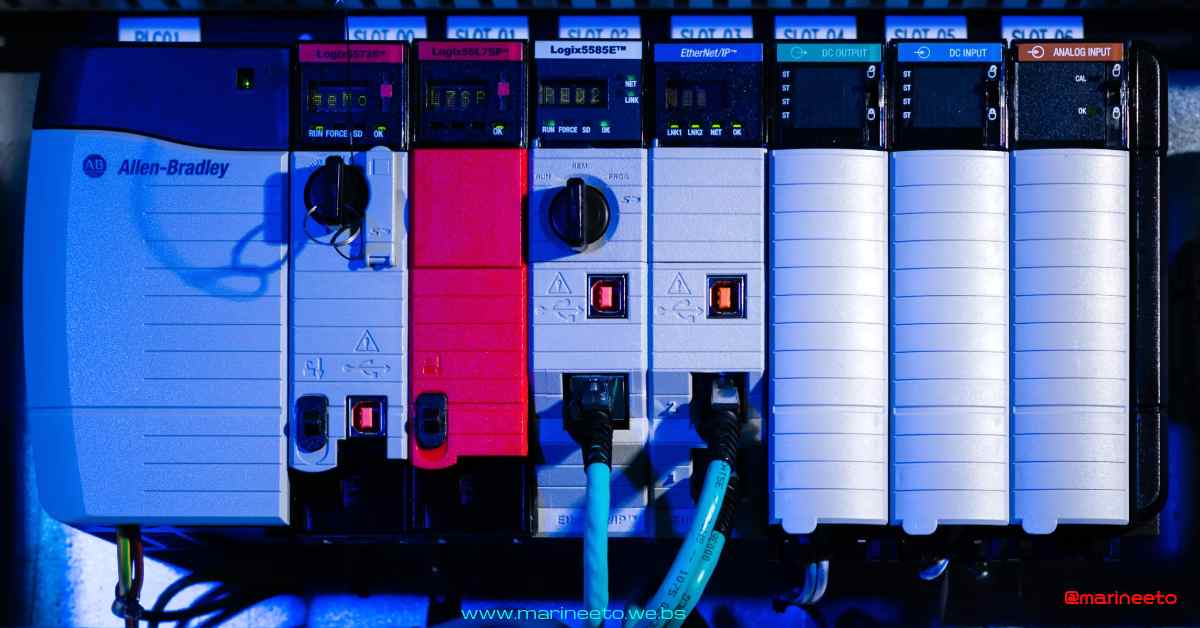

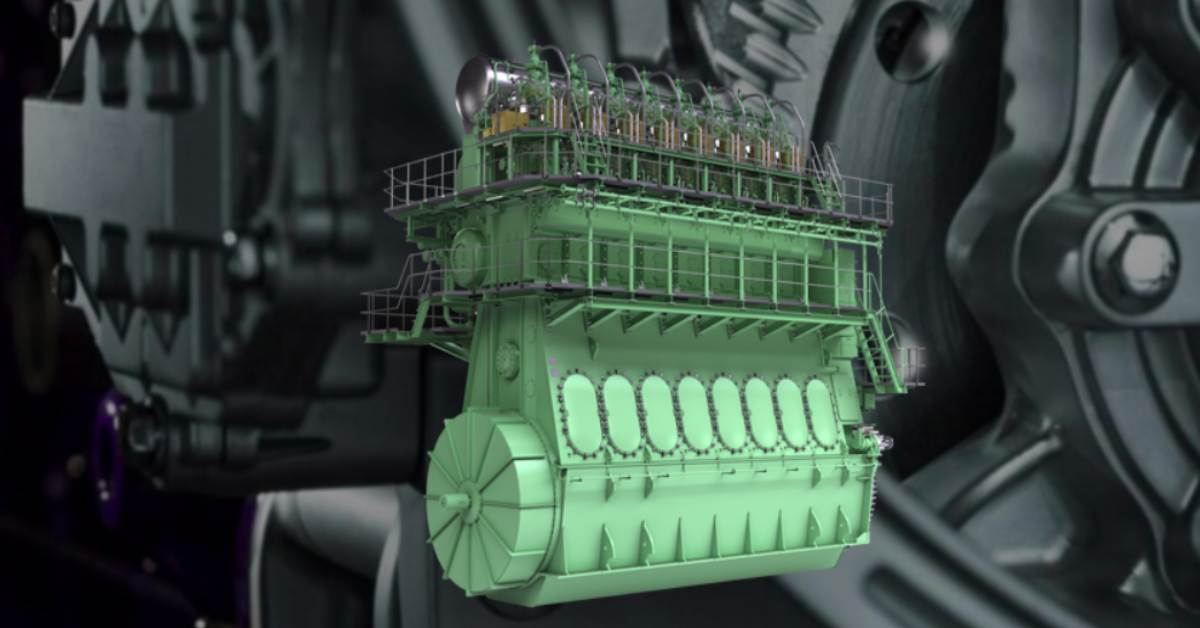
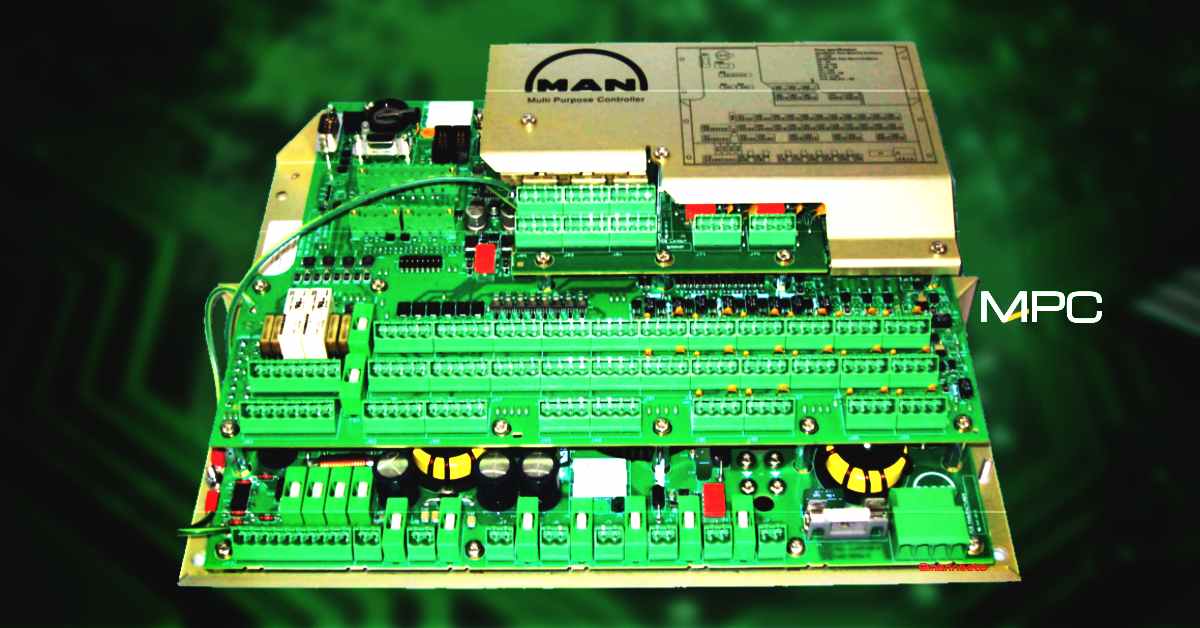
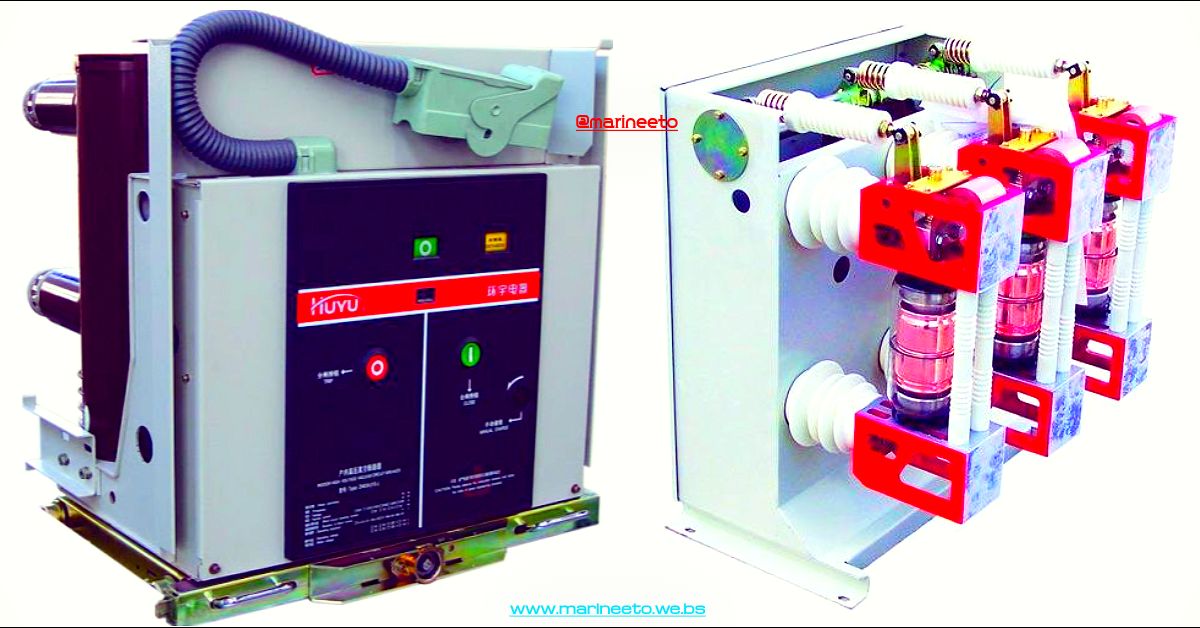

plz tell me about